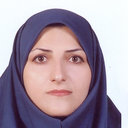Multiple Spectroscopic, Docking and Cytotoxic Study of a Synthesized 2,2' Bipyridin Phenyl Isopentylglycin Pt(II) Nitrate Complex: Human Serum Albumin and Breast Cancer Cell Line of MDA-MB231 as Targets.
Ключевые слова
абстрактный
In the present study, the biological activities of a new synthesized Pt(II)-complex, 2,2' bipyridinphenyl isopentylglycin Pt(II) nitrate was investigated via its interaction with the most important blood carrier protein of human serum albumin (HSA), using fluorescence and Far-UV circular dichroism (CD) spectroscopic techniques and also molecular docking. Moreover, cytotoxicity activity of the complex was studied against breast cancer cell line of MDA MB231 using 3-(4,5-dimethylthiazol-2-yl)-2,5-diphenyltetrazolium bromide (MTT) assay. The Pt(II)-complex has a strong ability to quench the intrinsic fluorescence of HSA through a static quenching mechanism. According fluorescence quenching data, the binding parameters of the interaction were calculated and showed that hydrophobic interaction has an important role. The molecular docking results in coherent with fluorescence measurements illustrated that Pt(II) complex can bind to HSA at one position that located in the hydrophobic cavity of groove between drug site I and II. Also, experimental data on driving force in binding site was confirmed whereas theoretical results demonstrated Pt(II) complexinteract to HSA by hydrophobic interaction. Far-UV-CD results showed that Pt(II)-complex induced an increasing in the content of α-helical structure of the protein and stabilized it. Also, MTT assay represented growth inhibitory effect of the complex toward the breast cancer cell line.


